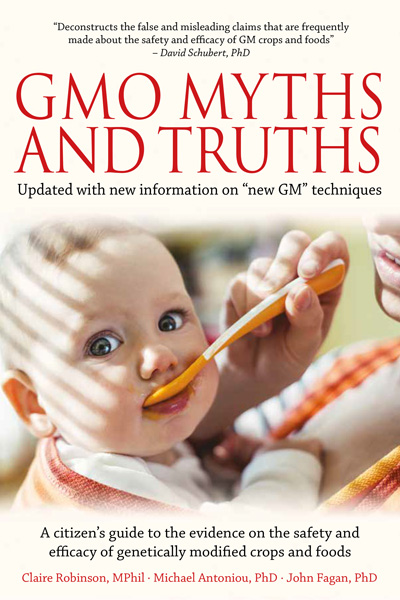 By Non-GMO Project staff
By Non-GMO Project staff
While genetically modified rice is not currently commercially available, GMO contamination in non-GMO rice is all too common — accounting for a third of all such events globally. Now, several countries are experimenting with genome-edited rice as deregulation allows these undetectable products to enter the market without transparency, traceability or labelling.
Rice is one of the world's key staple crops. According to the Food and Agriculture Organization, it provides up to 80% of daily caloric intake for nearly half the global population. The majority of rice production and consumption takes place in developing economies, particularly in China and India, which together dominate the global rice market.
Currently, GMOs are not present in commercial rice production, as no GMO rice is cultivated for the commercial market anywhere in the world. However, this absence hasn't prevented the biotech industry from tinkering with rice. GMO varieties have been developed, though not currently commercialised, for a variety of traits in GMO rice, including the following:
* Insect and disease resistance
* Herbicide tolerance
* Resistance to environmental stressors
* Nutrient fortification
* Nutraceutical properties.
While GMO rice has not meaningfully penetrated the commercial market, the presence of experimental or unauthorised GMO rice in non-GMO products is alarmingly common — rice accounts for as much as a third of all recorded GMO contamination events.
Despite its absence in commercial markets, several countries are moving forward with the development and trials of GMO rice. Here's a global snapshot of emerging GMO rice projects.
India leads gene-edited rice amid backlash
India recently made headlines by becoming the first country to approve two gene-edited rice varieties developed using CRISPR technology. The Indian Council of Agricultural Research (ICAR) was instrumental in developing the two varieties: Pusa DST Rice, designed for high performance in saline and alkaline soils, and DRR Rice 100 (Kamala), engineered for climate resilience, reduced greenhouse gas emissions, decreased water use and increased yield.
India's contentious history with GMOs has given rise to a robust anti-GMO movement. One activist and farmers' rights group, the Coalition for a GM-Free India, issued a press release calling for the immediate withdrawal of the two gene-edited rice varieties. The group's objections include the following:
* Gene editing may still involve foreign genetic material during development and clearly produces GMOs.
* The deregulation of GMOs made with new genomic techniques bypasses safeguards against off-target effects.
* The two rice varieties have the potential to harm human health and environmental wellbeing.
* Seed sovereignty and farmer livelihoods are at risk under industry-driven policy shifts.
The group's concerns were echoed in part by Venugopal Badaravada, a farmer representative on ICAR's governing body, who criticised the new GMO rice crops as prioritising "science-for-headlines" over "solutions-for-the-farm". He was subsequently expelled from his position.
Meanwhile, international organisations like GMWatch argue that the hype around yield improvements overlooks the potential of existing indigenous rice varieties which already meet high productivity standards.
China's emerging role in GMO rice research
As the world's largest rice producer and consumer, China's stance on GMOs has profound global implications, as other countries may refuse to cultivate GMO crops if they cannot access the Chinese market.
China appears to have given the green light to GMO rice. In 2023, researchers reported the second harvest of an experimental, high-stature GMO rice. The crop's increased height may allow plants to produce more grain, and developers say it is also resistant to pests and floods.
China's Ministry of Agriculture and Rural Affairs granted a safety certificate to a different gene-edited rice variety in December 2024 — a part of a broader GMO initiative to boost yields and food security, though the specific traits and cultivation plans are unclear.
Also, China's Nanjing Agricultural University partnered with the University of Missouri to develop gene-edited rice with resistance to bacterial blight. The GMO was announced in the February issue of The Crop Journal.
Currently, these efforts remain in the research or trial phase, with commercial cultivation unlikely for several years.
Japan explores pharmaceutical GMOs
Researchers at Japan's National Agriculture and Food Research Organization are developing a variety of gene-edited rice to alleviate hay fever. The GMO rice is engineered to produce allergens associated with Japanese cedar pollen, and a powder made from the crop may reduce immune response. The crop has been in development since 2000, and clinical trials are underway.
Italy explores gene-editing in a GMO-free culture
Italy's cultural heritage and agricultural identity have long been instrumental in public opposition to GMOs in food crops. According to European Coordination Via Campesina, 15 of Italy's 18 regions are proudly GMO-free. However, the EU's deregulation of crops produced using new genomic techniques (NGTs) appears to have created an opportunity for cultivating gene-edited crops on Italian soil.
In May 2024, Italy launched a field trial of a gene-edited Arborio rice, RIS8imo, developed for resistance to the fungal pathogen called rice blast. RIS8imo is the first crop developed through biotechnology to be planted in Italy in more than 20 years. However, no data was collected from the experiment because the crops were destroyed by vandals within months of planting. Scientists were able to save seeds from the cut stalks and plan to continue their research.
The global impact of GMO contamination
Despite the lack of commercially cultivated genetically modified rice, contamination incidents occur with startling frequency. The GM Contamination Register, a global database that tracks GMO contamination incidents in non-GMO crops, food or wild relatives, reports that rice accounts for roughly one-third of all recorded GMO contamination cases — more than any other crop. Since 2006, unauthorised GMO rice has been repeatedly detected in the global supply chain. It's unclear whether contamination stems from field trials or possible illegal cultivation of GMOs.
GMO contamination has serious implications, particularly for smallholder farms in developing economies that rely on rice production for their livelihoods. Contamination of non-GMO rice has already severed access to crucial export markets.
GMO rice's golden gamble: High hopes, low impact
The history of GMO rice presents a stark contradiction: no commercial cultivation, yet widespread contamination and controversy. Golden Rice is one of the most illustrative examples.
Golden Rice was developed as a genetically modified crop to combat Vitamin A Deficiency (VAD) — a serious and sometimes fatal condition that affects millions of the world's poorest people. While there is broad consensus on the need to prevent VAD, Golden Rice has sparked profound disagreement over its effectiveness and safety.
Supporters often portray Golden Rice as an unequivocal good — a humanitarian innovation designed to save lives. Skeptics, however, argue that it is a well-intentioned but flawed solution that fails in real-world conditions. In fact, the US Food and Drug Administration concluded that "Golden Rice does not meet the nutritional requirements to make a health claim," citing the low concentration of beta-carotene (a Vitamin A precursor).
Golden Rice was approved for cultivation in the Philippines between 2021 and 2024, but that approval was ultimately revoked due to safety concerns.
Until governments and industry stakeholders prioritise transparency, scientific rigour, and farmer rights, the risks of genetically engineered rice may continue to outweigh its theoretical rewards. The global community must demand responsible innovation that protects food sovereignty, biodiversity, and public health.
This article was first published by the Non-GMO Project and is republished by GMWatch with their kind permission.
Image: Shutterstock (licensed purchase)










